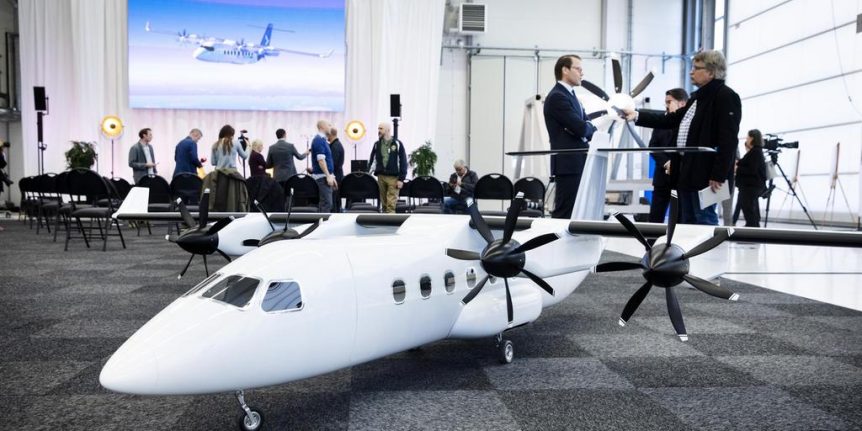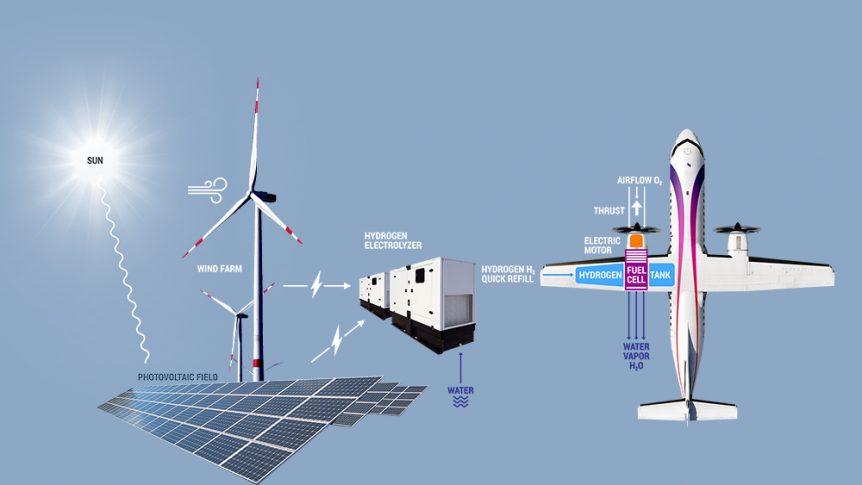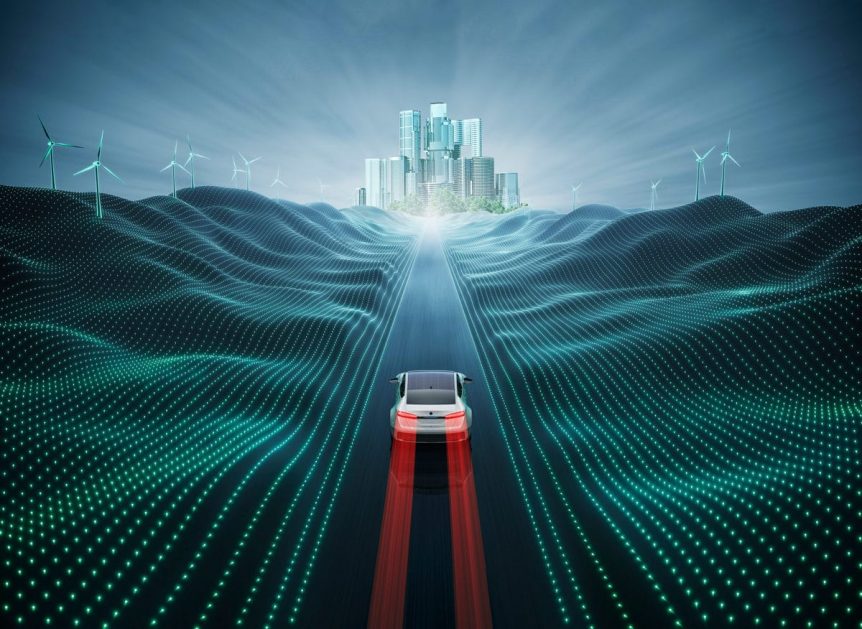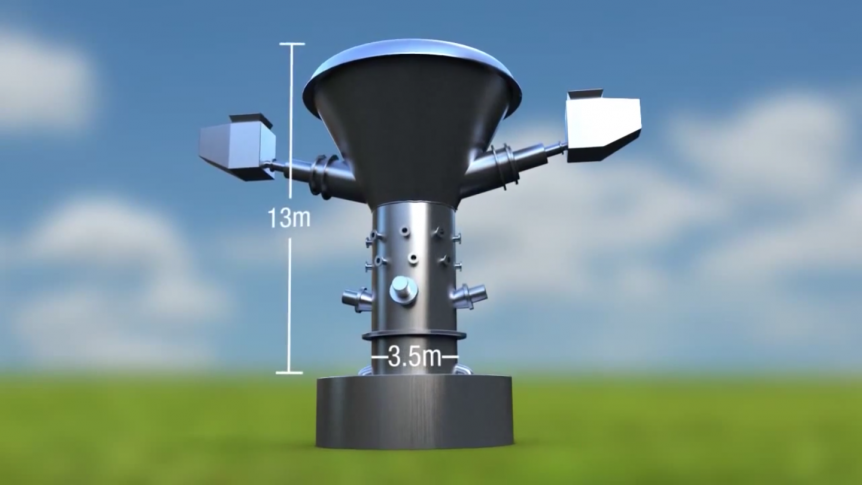Heart Aerospace, on the airport at Gothenburg Airport in southern Sweden, wants to bring inexpensive, four-motor electric flight to the masses. With $35 million (29.4 million euros) in recently acquired backing, the small team at Heart is working toward making a 19-passenger, four-motor airliner a reality. Their ES-19 is a single-aisle design with eight-rows of single seats and three-seat row at the cabin’s rear. Those 19 seats are a selling point, with United Airlines signing purchase contracts for 100 of the $ 9 million machines. Mesa Airlines follows suit for another 100 and Finnair, Finland’s national airline, has expressed interest in another 20. Funding from Bill Gates’ Breakthrough Energy Ventures and other investors totals over $35 million. For a niche market, the possibilities are expansive, with many small airlines flying short routes ready for such a craft. Heart sees the 19-seat market as promising, since few 19-seat commuter liners exist anymore. Part of that is economic, with small turboprops being …
ZeroAvia Gains Backing at High Levels
“Cannot be more proud and humbled to be a part of this stellar team!” That’s power system developer Gabriel DeVault’s response to ZeroAvia’s Chief Financial Officer Katya Akulinicheva’s enthusiastic endorsement of Bloomberg LP’s news. She listed the investors taking an active interest in ZeroAvia, including Ecosystem Integrity Fund, Breakthrough Energy Ventures, the Amazon Climate Pledge Fund, Horizons Ventures, Shell Ventures and Summa Equity. Already benefiting from a $16.3 million grant from Innovate UK, Aerospace Technology Institute and Department for Business, Energy and Industrial Strategy (BEIS), ZeroAvia will be able to push forward on plans to create a 19-seat hydrogen-powered commuter liner. According to Bloomberg, “ZeroAvia aims to demonstrate that it can fly a plane 500 miles (804 kilometers) with as many as 20 seats by 2023. It wants to scale up to 1,000 miles with over 100 seats by 2030.” With individuals such as Bill Gates and Jeff Bezos taking an interest, an aviation blog now feels a little like …
Quantumscape Batteries – an Emerging Answer
Hiding in plain site next to the San Jose, California International Airport, Quantumscape has been quietly developing a solid-state battery now emerging and trending toward mass production. With backing from Volkswagen, Bill Gates and a founding member of Tesla, the battery company would make big splash if it used a liquid electrolyte. It doesn’t. Wired goes a bit dramatic in describing the faults of batteries with liquid electrolytes. “IF ELECTRIC VEHICLES are ever going to fully supplant gas guzzlers on the world’s roads, they’re going to need an entirely new type of battery. Despite steady improvements over the past decade in the energy density and lifetimes of lithium-ion batteries, the cells in new EVs still lag behind internal combustion engines on pretty much every performance metric. Most EVs have a range of less than 300 miles, it takes more than an hour to recharge their battery packs, the cells lose nearly a third of their capacity within a decade, and …
Making Greener-Than-Green Hydrogen
What if we could make “clean” hydrogen from plain water, with none of the problems associated with coal, oil or gas extraction and the waste byproducts produced in extracting brown or blue H2? Several approaches such as artificial leaves have been developed, but a totally different new approach seems incredibly promising. A promising approach may lead to greener-than-green hydrogen. The Race to Invent the Artificial Leaf Varun Sivaram, in his book Taming the Sun discusses how Nate Lewis at Caltech and Daniel Nocera at Harvard “determined to find a way to wring fuel out of thin air.” Each has created an “artificial leaf” that emulates the photosynthesis performed naturally by real leaves. A real leaf is far more complex than one would imagine, and the chemical interactions inside even more so. For all that, photosynthesis is only one percent efficient. “A commercially viable artificial leaf would solve several of the trickiest challenges in clean energy. It would create a way …




